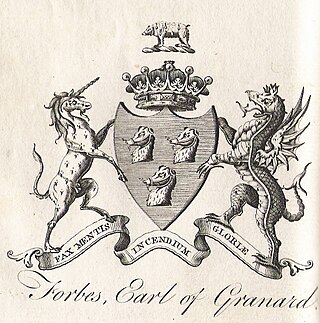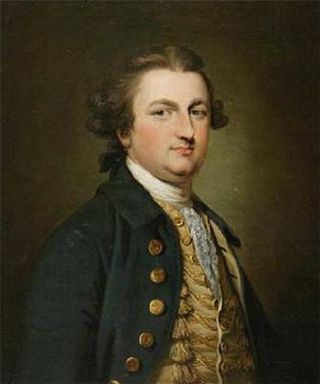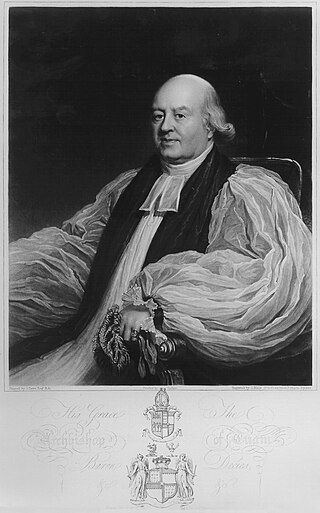
Duke of Leinster is a title in the Peerage of Ireland and the premier dukedom in that peerage. The subsidiary titles of the Duke of Leinster are: Marquess of Kildare (1761), Earl of Kildare (1316), Earl of Offaly (1761), Viscount Leinster, of Taplow in the County of Buckingham (1747), Baron of Offaly, Baron Offaly (1620) and Baron Kildare, of Kildare in the County of Kildare (1870). The viscounty of Leinster is in the Peerage of Great Britain, the barony of Kildare in the Peerage of the United Kingdom, and all other titles in the Peerage of Ireland. The courtesy title of the eldest son and heir of the Duke of Leinster is Marquess of Kildare. The Duke of Leinster is the head of the House of Kildare.

Marquess of Headfort is a title in the Peerage of Ireland. It was created in 1800 for Thomas Taylour, 2nd Earl of Bective.

Marquess of Londonderry, of the County of Londonderry, is a title in the Peerage of Ireland.

Earl of Meath is a title in the Peerage of Ireland. It was created in 1627 and is held by the head of the Brabazon family.

Viscount Hood, of Whitley in the County of Warwick, is a title in the Peerage of Great Britain. It was created in 1796 for the famous naval commander Admiral Samuel Hood, 1st Baron Hood. He had already been created a Baronet, of Catherington, in the Baronetage of Great Britain on 20 May 1778, and Baron Hood, of Catherington in the County of Southampton, in the Peerage of Ireland in 1782.

Earl of Granard is a title in the Peerage of Ireland. It was created in 1684 for Arthur Forbes, 1st Viscount Granard. He was a lieutenant-general in the army and served as Marshal of the Army in Ireland after the Restoration and was later Lord Justice of Ireland. He had already succeeded his father as second Baronet of Castle Forbes and been created Baron Clanehugh and Viscount Granard in 1675, also in the Peerage of Ireland. The baronetcy, of Castle Forbes in county Longford, was created in the Baronetage of Nova Scotia on 29 September 1628 for his father, Arthur Forbes.

Earl of Limerick is a title that has been created twice in the Peerage of Ireland, associated first with the Dongan family, then with the Pery family. It should not be confused with the title Viscount of the City of Limerick held by the Hamilton family also Earls of Clanbrassil.

Earl of Powis (Powys) is a title that has been created three times. The first creation came in the Peerage of England in 1674 in favour of William Herbert, 3rd Baron Powis, a descendant of William Herbert, 1st Earl of Pembroke. In 1687, he was further honoured when he was made Marquess of Powis.

Earl of Norbury, in the County of Tipperary, is a title in the Peerage of Ireland. It was created in 1827, along with the title Viscount Glandine, of Glandine in the King's County, for the Irish politician and judge John Toler, 1st Baron Norbury, upon his retirement as Chief Justice of the Common Pleas in Ireland. The titles were created with special remainder to his second son, Hector, as his eldest son, Daniel, was then considered mentally unwell. Lord Norbury had already been created Baron Norbury, of Ballycrenode in the County of Tipperary, in the Peerage of Ireland in 1800, with remainder to the heirs male of his body. Moreover, his wife, Grace Toler, had been created Baroness Norwood, of Knockalton in the County of Tipperary, in the Peerage of Ireland in 1797, with remainder to the heirs male of her body. By the time Lord Norbury was raised to the Earldom, his wife had died and their eldest son had succeeded her as 2nd Baron Norwood. This son also succeeded Lord Norbury himself on his death in 1831 as 2nd Baron Norbury, whilst his younger brother Daniel succeeded to the viscountcy and earldom according to the special remainder. In 1832, the second Earl also succeeded his elder brother in the two baronies. He had already in 1825 assumed the additional surname of Graham by Royal licence.

Earl of Clanwilliam is a title in the Peerage of Ireland. It was created in 1776 for John Meade, 1st Viscount Clanwilliam. The Meade family descends from Sir John Meade, who represented Dublin University and County Tipperary in the Irish House of Commons and served as Attorney-General to James, Duke of York. In 1703, he was created a Baronet, of Ballintubber in the County of Cork, in the Baronetage of Ireland. His eldest son, Pierce, the second Baronet, died unmarried at an early age and was succeeded by his younger brother Richard, the third Baronet. Richard represented Kinsale in the Irish Parliament.

Earl of Mornington is a title in the Peerage of Ireland. It was created in 1760 for the Anglo-Irish politician and composer Garret Wellesley, 2nd Baron Mornington. On the death of the fifth earl in 1863, it passed to the Duke of Wellington; since that date, the title has generally been used by courtesy for the heir apparent to the heir apparent to the dukedom.

Earl of Lytton, in the County of Derby, is a title in the Peerage of the United Kingdom. It was created in 1880 for the diplomat and poet Robert Bulwer-Lytton, 2nd Baron Lytton. He was Viceroy of India from 1876 to 1880 and British Ambassador to France from 1887 to 1891. He was made Viscount Knebworth, of Knebworth in the County of Hertford, at the same time he was given the earldom, also in the Peerage of the United Kingdom.

Henry Somerset, 5th Duke of Beaufort was an English courtier and politician. Styled the Marquess of Worcester from 1746, at his father's death on 28 October 1756, he succeeded him as 5th Duke of Beaufort, 7th Marquess of Worcester, 11th Earl of Worcester, and 13th Baron Herbert.

Earl of Dartrey, of Dartrey in the County of Monaghan, was a title in the Peerage of the United Kingdom. It was created in July 1866 for The 3rd Baron Cremorne.
Nathaniel Clements, 2nd Earl of Leitrim, KP PC (Ire), styled The Honourable from 1783 to 1795, and then Viscount Clements to 1804, was an Irish nobleman and politician.

Baron Dorchester was a title that was created twice in British history, once in the Peerage of Great Britain and once in the Peerage of the United Kingdom. The first creation came in the Peerage of Great Britain on 21 August 1786 when the soldier and administrator Sir Guy Carleton was made Lord Dorchester, Baron of Dorchester, in the County of Oxford. He was succeeded by his grandson, the second Baron. He was the only son of the Hon. Christopher Carleton, third son of the first Baron. The second Baron died unmarried at an early age and was succeeded by his first cousin, the third Baron. He was the only son of the Hon. George Carleton, fourth son of the first Baron. He had no sons and was succeeded by his first cousin, the fourth Baron. He was the only son of the Reverend and Hon. Richard Carleton, seventh son of the first Baron. The fourth Baron was a Colonel in the Coldstream Guards. He was childless, and the title became extinct upon his death on 30 November 1897.

Baron Wentworth is a title in the Peerage of England. It was created in 1529 for Thomas Wentworth, who was also de jure sixth Baron le Despencer of the 1387 creation. The title was created by writ, which means that it can descend via female lines.

William Beresford, 1st Baron Decies was an Anglo-Irish clergyman.

Arthur Wolfe, 1st Viscount Kilwarden was an Anglo-Irish peer, politician and judge, who held office as Lord Chief Justice of Ireland. He was killed during the Irish rebellion of 1803.
Hercules Langford Rowley PC was an Irish politician and landowner.












